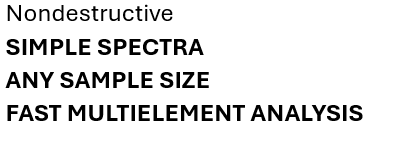Exam 2- UV-vis/IR/Atomic Spectroscopy
1/16
There's no tags or description
Looks like no tags are added yet.
Name | Mastery | Learn | Test | Matching | Spaced |
|---|
No study sessions yet.
17 Terms
Pnot=
INCIDENT IRRADIANCE (BACKGROUND TRANSFORM)
P=
TRANSMITTED IRRADIANCE (SAMPLE TRANSFORM)
BANDWIDTH
# OF WAVELENGTHS ALLOWED TO PASS THROUGH
Beer Lambert Law
light must be monochromatic
concentration must be low
sample cannot be fluorescent or heterogeneous
no photochemical transformation
sample cannot form complexes with solvent
Spectral interference
refers to the overlap of analyte signal with signals due to other elements or molecules in the sample or with signals due to the flame or furnace
Chemical interference
occurs when a component of the sample decreases the extent of atomization of analyte through some chemical reaction
Isobaric interference
the overlap of different species with nearly the same mass-to-charge ratio in a mass spectrum
Ionization interference
refers to a loss of analyte atoms through ionization
Problem: It’s impossible to get perfectly monochromatic radiation
uses a small delta wavelength effective (bandwidth)
do measurements at max wavelength—> best linear relationship
Problem: Differences b/t sample cells, position
Solution: Use carefully-matched cells, use one cell
position same way
clamp carefully
or NEVER MOVE IT!
Problem: Atomic absorption lines are sharp!
Solution: Use a source with a narrower delta wavelength effective (bandwidth) than the absorption linewidth
Problem: Lots of atomic emission lines from hollow cathode lamp
Solution: Use a monochromator to select one line for AAS
Problem: My analyte doesn’t absorb strongly or it absorbs in the same region as other stufff
increase Intensity
chemical rxn to convert analyte into something with large extinction coefficient
Problem: Irradiance losses due to reflection, scattering, absorption of cell, absorption by solvent
run a blank
wipe down cuvette
avoid dust
filter solution if it is cloudy
PMT

Photodiode
conduction in response to light
light energizes e- s in depletion layer
e-s and hole move toward poles
Advantages of x-ray fluorescence
